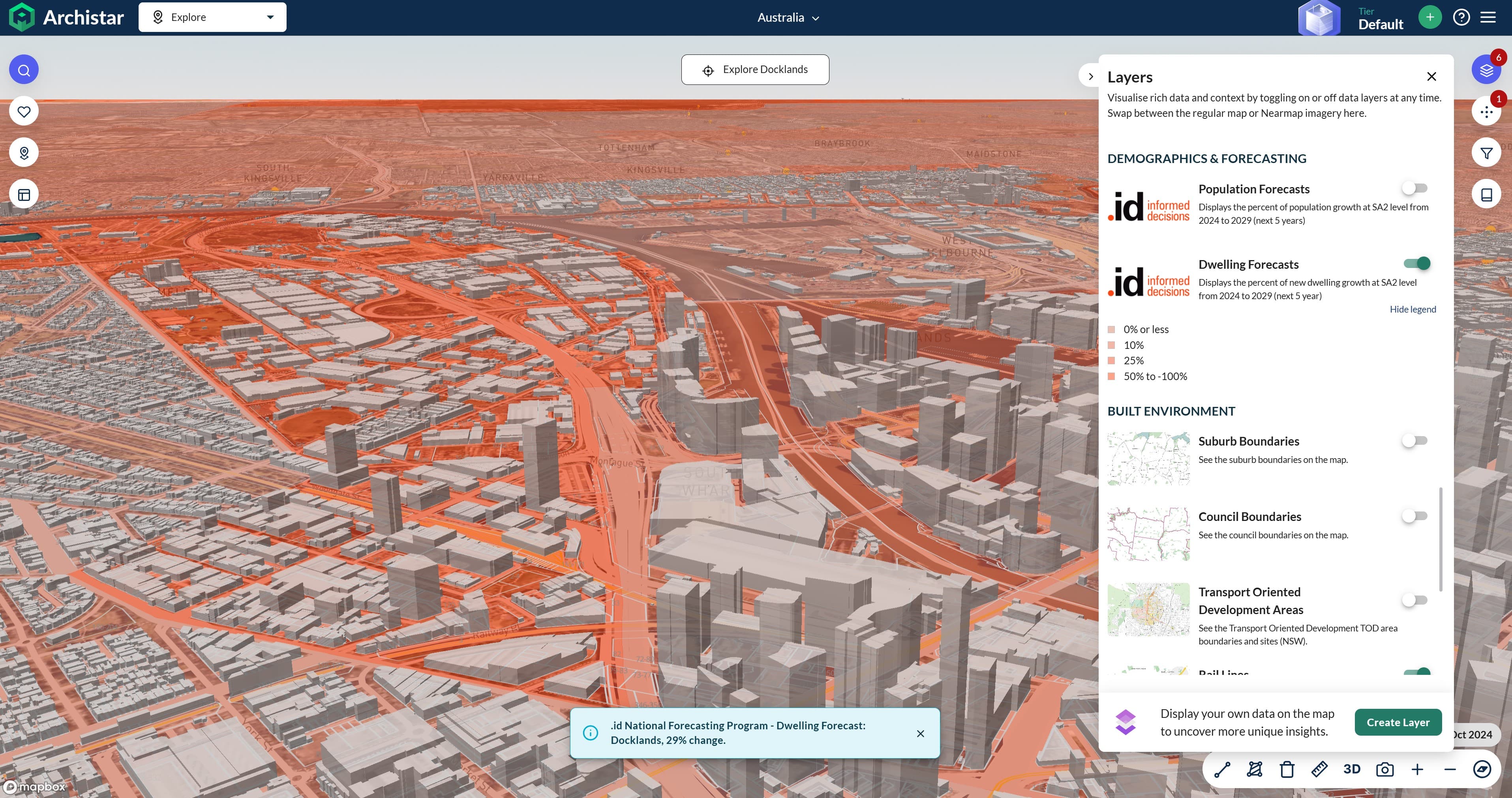Our clients often express a bit of uncertainty about the difference between the various approaches to population forecasting.
In this blog I will give you a basic overview of the differences between the bottoms-up and tops-down approaches, as well explaining the benefits of bottoms-up population forecasting.

What’s the difference?
The main difference between the two approaches is the geographic level where the population forecast is produced. With a tops-down approach the forecast is produced starting with the largest geography first, with that number then constraining the lower geographies. For example, the Australian Bureau of Statistics (ABS) use a tops-down approach to produce the estimates and projections for Australia as a whole first, after that, the estimates and projections for the states and territories are produced, with the total of the states and territories needing to sum to the Australia-as-a-whole figures.
With bottoms-up approach, population forecasts for all sub-regional areas are created separately and then added together to obtain the regional total. Producing statistics for a sub-region through a bottoms-up approach is based on assumptions about births, deaths and migration for that area. These are then summed to produce a total for the larger geographies; regions, states, territories and country. Often a bottoms-up statistic will be constrained to the top down statistic at a final stage, this is largely to introduce consistency and reduce confusion.
.id has prepared population forecasts for many local government areas, across both Australia and New Zealand, these are prepared in consultation with clients using the bottoms-up approach. State and territory planning departments prepare population projections for their sub-state or territory geographies using a tops-down (cohort component method) approach. The different approaches can produce different results. In terms of comparability, the date of publishing, and the data available to inform the forecasts at that time, are important to keep in mind, as well as the assumptions about the components of population change.
What are the benefits of a bottoms-up approach?
A bottoms-up approach is robust as it is based on local knowledge about housing development, land availability, household composition and size, and family life cycles of that particular area. Not all producers of population forecasts are willing or able to take this approach due to the time-consuming nature of researching and applying this approach.
What do bottoms-up and tops-down approaches have in common?
Both a tops-down, and bottoms-up approach involve an equation to determine the population at a given point in time, this is known as the cohort component method. The equation begins with a starting population (usually the official population count, based on census results) by age, sex and a specific geographic location, this population is then aged by year, with additions made for births and subtractions made for deaths (all by age and sex). Migration into or out of the area is added or subtracted depending on the direction of the movement.
More detailed information about how .id undertakes bottoms-up population forecasting is available from ‘Small Area Forecast Information – Methodology Paper (Victoria)’ on request.
Access the Australian Community Profile now! You will find Census results for each Capital City, State, Southeast Queensland and Australia on topics including population, age, country of birth, languages spoken, occupations, industries, employment, disability, income, qualifications, transport and much more…
Access the new profile.id sites and other population statistics for Local Government Areas and suburbs at .id’s demographic resource centre.












